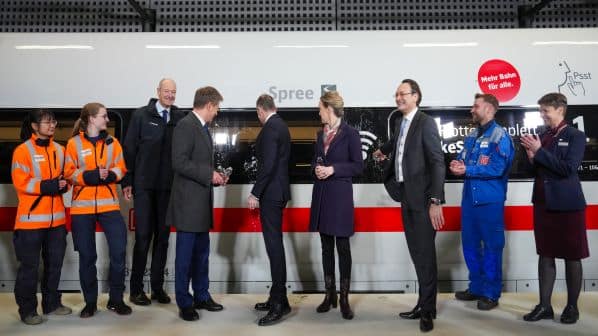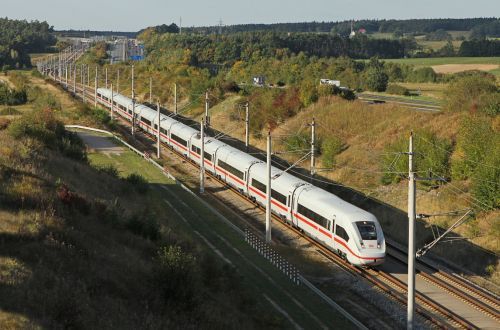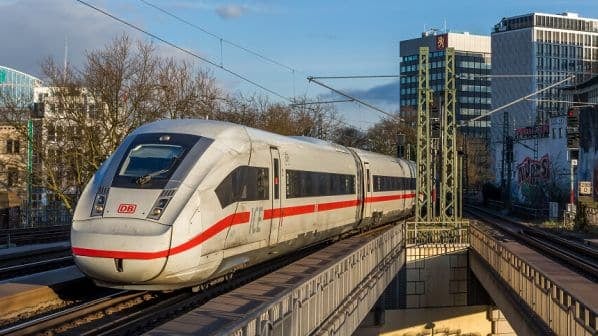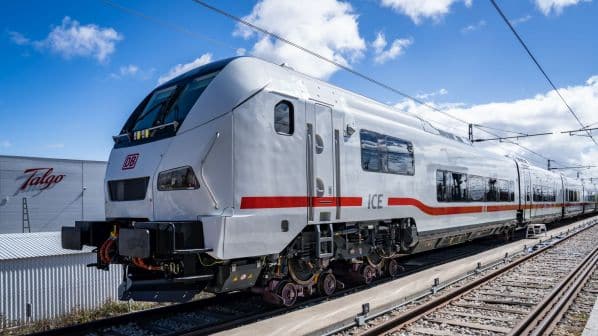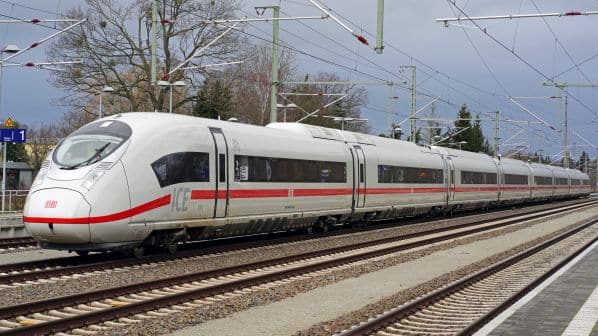GERMAN Rail (DB) has received the 137th and final ICE 4 from Siemens Mobility, a seven-car high-speed EMU, that was named Spree during a ceremony at Berlin’s Main Station on March 19.
Water from the River Spree was used to “baptise” the train, according to DB, in a ceremony witnessed by Dr Richard Lutz, DB CEO, Dr Volker Wissing, federal minister for digital affairs and transport, Ms Manja Schreiner, Berlin’s senator for mobility, transport, climate protection and the environment, Dr Michael Peterson, DB member of the management board for long distance passenger transport, and Dr Roland Busch, CEO of Siemens.
DB’s ICE 4 fleet consists of 37 seven-car trains, along with 50 12-car trains and 50 13-car XXL ICE 4s, which are already in service. The XXL trains offer seats for more than 1000 passengers. ICE 4 deliveries commenced in 2016, with more than 1500 cars and 105,000 seats now available to DB.
The €6bn contract for an initial 130 trains was awarded to Siemens in 2011 and is described as the largest procurement programme in the history of DB. Siemens awarded a contract worth €2.5bn to Bombardier (now Alstom) in 2011 to produce painted car bodies, inside bearing bogies and conduct final assembly of the three train types.
DB will continue to put a new ICE train into service every three weeks in 2024, according to Lutz. As well as the ICE 4, deliveries of 90 ICE 3neo EMUs from Siemens and 79 ICE L trains from Talgo are underway as DB works to increase the size of its ICE fleet to 450 trains by 2030 and reduce the average age of the fleet from 18 to 12 years under a €12bn investment programme. Tenders for another 95 trains known as ICE 5 were launched in December.
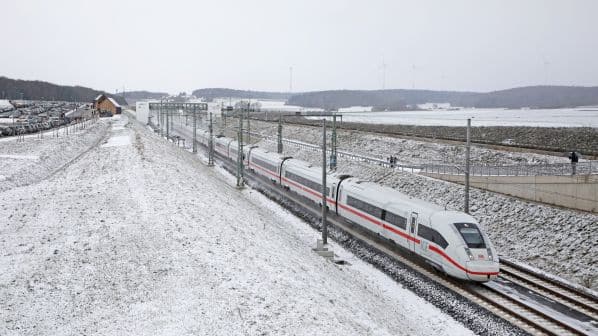
“Siemens and DB have delivered this project right on time,” Lutz says. “Expansion of the DB fleet is a central lever for achieving the goal of our Strong Rail strategy: doubling the number of passengers using our long-distance services, because those who travel by train help protect the environment.”
“The punctual delivery of the last ICE 4 marks a great joint success for DB and Siemens,” Busch says. “As the longest train in the ICE fleet, the ICE 4 has around 25% more seats. And since it is lighter and more aerodynamic, it uses 30% less energy than previous models. Over its lifetime, each train replaces 20,000 cars and saves up to 400,000 tonnes of CO2.”
For detailed data on German fleet orders, subscribe to IRJ Pro.
